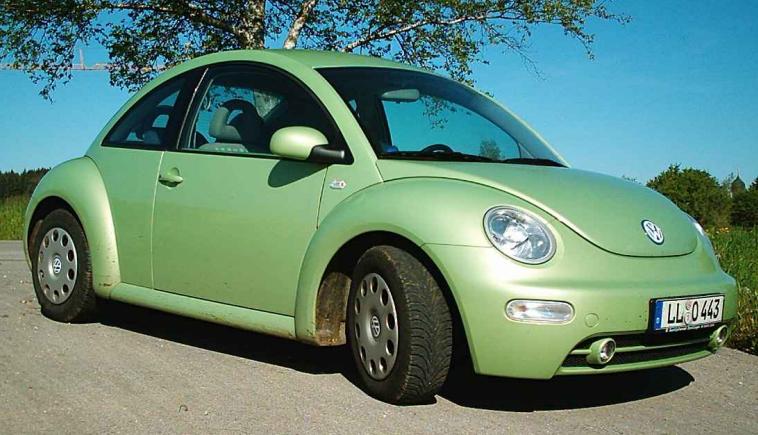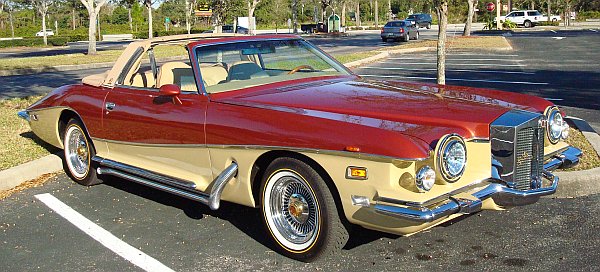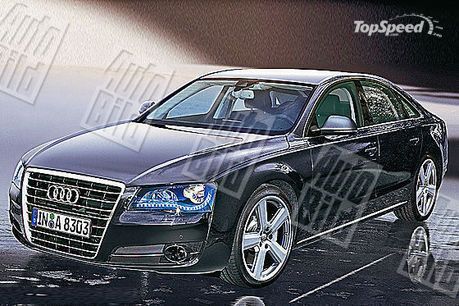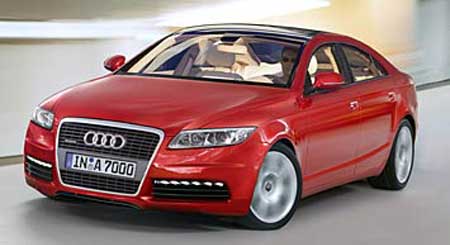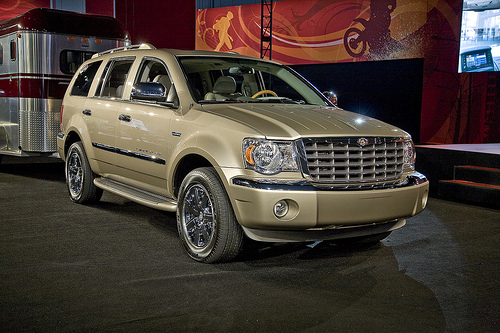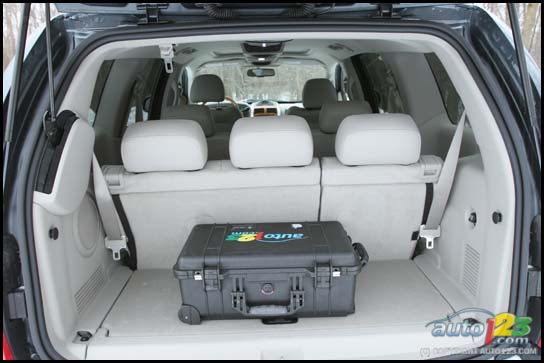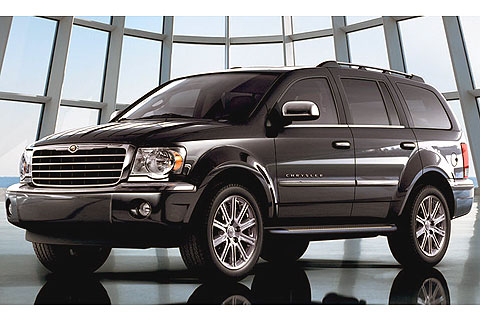The
Toyota Tundra is a full-size pickup truck introduced by Toyota in the year 2000. It was widely considered to be the first full-size import-brand truck built with an American look and feel and a refined V8 engine. The Tundra was eventually nominated for the North American Truck of the Year award and was Motor Trend magazine's Truck of the Year in 2000 and 2008. Currently the Tundra is assembled in San Antonio, Texas, where production was consolidated in 2008.
The first generation Tundra had many similarities with the older Toyota T100 and the compact Toyota Tacoma. The biggest of those similarities was the shared use of a 3.4-liter V6 engine which was the top of the line engine in both the Tacoma and T100. The V6 engine would serve as the base engine for the Tundra, while a second powerplant, a first for a Toyota truck, a V8 engine sized at 4.7-liters was added to the lineup.
First generation (2000–2006)
First generation  |
| Production | 1999–2006 |
| Model year(s) | 2000–2006 |
| Body style(s) | 2-door Regular cab
4-door Access cab
4-door Double cab |
| Engine(s) | 3.4 L 5VZ-FE V6
190 horsepower (2000-2004)
4.0 L 1GR-FE V6
236 horsepower (2005-2006)
4.7 L 2UZ-FE V8
245 horsepower (2000-2004)
282 horsepower (2005)
271 horsepower (2006) |
| Transmission(s) | 5-speed manual (2000-2004)
4-speed A340 automatic (2000-2004)
6-speed manual (2005-2006)
5-speed automatic (2005-2006) |
| Wheelbase | 128.3 in (3259 mm)
Double Cab: 140.5 in (3569 mm) |
| Length | 2000-04: 217.5 in (5525 mm)
Double Cab: 230.1 in (5845 mm)
2005-06: 218.3 in (5545 mm) |
| Width | 75.2 in (1910 mm)
Double Cab & Limited: 79.3 in (2014 mm)
Limited Double Cab: 79.7 in (2024 mm) |
| Height | SR5 V8 4WD: 71.1 in (1806 mm)
2000-04 SR5 Access Cab 4WD: 71.5 in (1816 mm)
SR5 Stepside Access Cab 4WD: 71.3 in (1811 mm)
Limited 4WD: 71.7 in (1821 mm)
2WD: 70.5 in (1791 mm)
SR5 Access Cab 2WD: 70.7 in (1796 mm)
Limited 2WD: 70.9 in (1801 mm)
Double Cab 4WD: 74.4 in (1890 mm)
Double Cab Limited 4WD: 75.0 in (1905 mm)
Double Cab Limited 2WD: 74.6 in (1895 mm)
Double Cab 2WD: 74.0 in (1880 mm) |
| Curb weight | 3935–4215 lb (1785–1912 kg) |

2000-2002 Toyota Tundra Access cab SR5
Publicly introduced in May 1999 as a 2000 model, the Tundra prototypes and "show trucks" were initially known as T150s. However, Ford and automotive pundits felt that this name was too close to the market-leader Ford F-150, and following a lawsuit by Ford, the production truck was renamed the Tundra (Toyota claimed they never truly intended to use the T150 name in actual production). Toyota then countersued Ford regarding the name of their then-released Lincoln LS sedan, arguing it was too close to that of the Lexus LS.

Toyota Tundra StepSide
The Tundra was slightly larger than the T100, but still suffered the perception of being too small and carlike to pose a serious threat to the domestic pickup trucks. With a production capacity of 120,000, sales were double the rate of the T100. At the time the Tundra also had the largest initial vehicle sales for Toyota in its history. It garnered impressive honors, including
Motor Trend's Truck of the Year award for 2000 and Best Full- Size Truck from
Consumer Reports. Built in a new Toyota plant in Princeton, Indiana, with 65 percent domestic content, the Tundra showed that Toyota was serious about closing the gap on the "Big Three" in all major segments.
Engine choices available in the Tundra were a 24V 3.4-liter V6 engine that produced 190 horsepower (140 kW) and 220 lb·ft (298 N·m) of torque and an LEV certified 32 valve 4.7-liter "i-Force" V8 engine that produced 245 horsepower (183 kW) and 315 lb·ft (427 N·m) of torque. A Toyota Racing Development (TRD) supercharger was already available for the 3.4-liter V6 (2000-2003 models) that bumped horsepower to the 260 horsepower (190 kW) range and 260 lb·ft (350 N·m) of torque. TRD introduced a second supercharger for the V8 (2000-2003 models) engine late into its second year of production that pushed the V8 numbers to the mid 300 horsepower (220 kW) range and torque to the 400 lb·ft (540 N·m) range. Although the V6 supercharger is still widely available, the V8 supercharger is rarer and harder to find because TRD stopped its production once Toyota released the updated VVT-i equipped 4.7-liter engine.

2003-2006 Toyota Tundra regular cab
The grille was updated for 2003 and the Double Cab version was added to the lineup in 2004. The Double Cab model was a true crew cab with four normal doors, with interior and exterior details copied from the Toyota Sequoia. Its bed is nearly 5 inches (130 mm) longer than the competing Nissan Titan or Ford F-150. It is also 13 inches (330 mm) longer and 3 inches (76 mm) taller than the Regular and Access cab versions. A new engine was introduced in 2005: a 4.0-liter V6 rated at 236 horsepower (176 kW) and 266 ft·lbf (361 N·m) of torque, and the existing 4.7-liter V8 was updated with Toyota's VVT-i variable valve timing technology and was rated at 282 horsepower (210 kW) and 325 ft·lbf (441 N·m) of torque while the 2006 versions were rerated at 271 horsepower (202 kW) and 313 ft·lbf (424 N·m) of torque . The 5-speed manual gave way to a 6-speed manual, and a 5-speed automatic replaced the 4-speed. With a towing capacity of just 6,900 lb (on the Double Cabs) and a 7,100 pounds towing capacity on the Access Cabs and Regular Cabs with a V8 engine, it still did not have enough muscle to compete with the heavy-duty offerings of the Big Three and Nissan. Domestic truck aficionados still derided it as a "7/8 scale" pickup.
In 2006 the Darrell Waltrip Edition was sold honoring the NASCAR star and his participation in the NASCAR Truck Series. Only 2000 V8 powered Double Cab models were produced. The package included special badging and unique 18" wheels.
The IIHS rated the Tundra "Good" overall in their frontal offset crash test. It was the first full-size pickup awarded a "Good" score, it's then competitors from Ford and Dodge were rated "Poor" and in the case of GM's entry "Marginal"
Safety recalls
During late 2009 Toyota issued a recall on 2000-2003 model year Tundras regarding rust problems of a rear crossmember. This recall involved 110,000 vehicles and followed a similar action for the Tacoma. Following the Tacoma voluntary recall Tundra owners began complaining of rust issues prompting the NHTSA to begin investigation. Within days Toyota recalled the Tundra. If no rust is detected an anti-corrosion compound will be applied, if rust is detected the crossmember will be replaced. While Toyota originally limited the recall to 20 cold-weather states, problems were already evident elsewhere. In March 2010, the recall was expanded throughout the country.
Second generation (2007–present)
Second generation 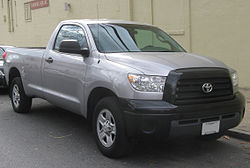 |
| Production | 2007–present |
| Model year(s) | 2007–present |
| Body style(s) | 2-door Regular cab
4-door Double Cab
4-door Crewmax |
| Engine(s) | 4.0 L 1GR-FE V6 (VVT-i)
236 horsepower
4.7 L 2UZ-FE V8 (VVT-i)
276 horsepower
4.6 L 1UR-FE V8 (VVT-i)
310 horsepower
5.7 L 3UR-FE V8 (Dual VVT-i)
381 horsepower |
| Transmission(s) | 5-speed automatic
6-speed automatic (AB60E/F)
6-speed automatic (A760E/F) |
| Wheelbase | Regular Cab: 126.8 (3220 mm)
Crew Cab: 145.7 (3700 mm)
Double Cab: 164.6 (4180 mm) |
| Length | Regular Cab: 209.8 in (5329 mm)
Crew Cab: 228.7 in (5809 mm)
2007-09 Double Cab: 246.7 in (6266 mm)
2010- Double Cab: 247.6 in (6289 mm) |
| Width | 79.9 in (2029 mm) |
| Height | Regular Cab 4WD: 76.2 in (1935 mm)
Regular Cab LB 4WD & Double Cab 4WD: 76.4 in (1941 mm)
CrewMax 4WD: 76.0 in (1930 mm)
Regular & Double Cab 2WD: 75.8 in (1925 mm)
CrewMax 2WD: 75.6 in (1920 mm) |
A larger Tundra was introduced at the 2006 Chicago Auto Show. It had lifted cues of its smaller brother the Toyota Tacoma along with some cues from the Toyota FTX concept truck. One unique styling element used fenders that bulged to resemble a biceps muscle. The truck had many enhancements, such as a towing capacity of up to 10,000+ lb, a payload capacity of over 2,000 lb (910 kg), a new 5.7-liter
3UR-FE V8 engine mated to a new 6-speed automatic transmission. The second generation Tundra has 3 engines available. The new 5.7-liter V8 that produces 381 horsepower (284 kW) and 401 pound-feet (544 N·m) of torque, and the carry over 4.7-liter
2UZ-FE V8 rated at 276 horsepower (206 kW) and 313 pound-feet (424 N·m) of torque, as well as the previous 4.0-liter
1GR-FE V6 rated at 236 horsepower (176 kW) and 266 pound-feet (361 N·m) of torque.

2007-2009 Toyota Tundra CrewMax Limited
When the new Tundra first came out in February 2007 it was available in 31 configurations, which consisted of 3 bed lengths, 3 cab configurations, 4 wheel-bases, and 2 transmissions The new Double Cab replaces the previous generations Access Cab, and the all new Crew Max replaces the previous generations Double Cab, it is also built to compete with the Dodge Ram Mega Cab. The Double Cab is available with a 6.5-foot (2.0 m) bed, regular bed, or an 8-foot (2.4 m) long bed, while the Crew Max is only available with a 5.5-foot (1.7 m) short bed. The Tundra also features a new 6-speed automatic transmission which can lockup the torque converter in 5
th and 6
th gears with a manual shift mode which is standard with the 5.7-liter, and gives it a 0-60 time of 6.3 seconds, and a quarter mile time of 14.7 seconds.





